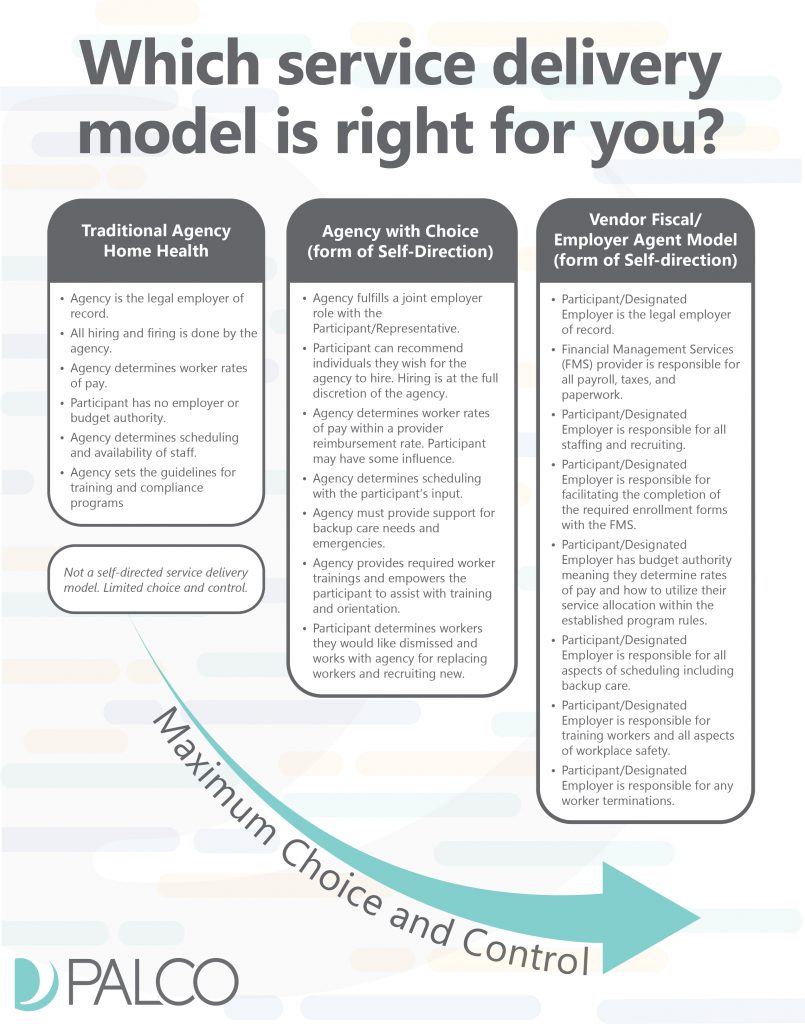What is Self-Direction?
Self-direction is a model of long-term care that helps people—of all ages with varying disabilities—live independent lives in their own homes. Self-direction began in the 1980’s during a movement to de-institutionalize people with disabilities from settings like nursing homes and hospitals and get them back into the community receiving their care. According to the AARP 2023 LTSS State Scorecard, 1,520,267 people are enrolled in self-direction nationwide. This is a 23.16% increase from 2019!
In self-direction, the person receiving services has choice and control over the services and supports that they need. They can also designate someone like a trusted family member or friend to assist them with managing the services on their behalf. Self-direction is a great alternative to traditional agency home health care, not only because of the flexibility and independence, but also because it is much more cost-effective. People know their own needs better than anyone, so they can best decide who, what, how, and when they would like to receive services.
Individuals receiving services through self-direction often find that their needs are met in higher instances, and they receive higher quality of services by choosing and managing the services themselves. They can get the care they need from the comfort of their own home and often can hire their family and friends.
In addition to care, many self-directed programs allow individuals to purchase goods or other services they may need such as grab bars or lawn care.
While self-direction provides many benefits to the person receiving services, it can also be beneficial to those employed under it as well. Caregivers are less likely to suffer burnout under self-direction, financially, mentally, and physically because of opportunities to employ family caregivers and the option of respite that many programs in self-direction offer.
There are two types of self-direction: Agency with Choice and Vendor Fiscal/Employer Agent Model.
The Agency with Choice model sees an Agency as a joint employer alongside the Participant/Representative. The participant can recommend employees and will work with the agency through the caregiver recruiting process. In this model, the Agency will do the hiring, scheduling, and training of the caregivers, with the input of the participant/representative.
The Vendor Fiscal/Employer Agent Model gives the most independence to the Participant/Designated Employer. In this model, they are responsible for all recruiting, staffing, and worker terminations. They make sure that enrollment forms are completed and determine the rates of pay based on the budget. Scheduling and training are also part of the participant/designated employer’s responsibilities. The Financial Management Services (FMS) provider supports the Participant/Designated Employer and is responsible for all payroll, taxes, and paperwork.
Which one is right for you? Check out our service delivery model comparison below for more info.

**Please note, services can vary by state and program. You should always speak to the service administrators in your state or county for full details and clarifications.

by Cody Waits
Communications and Training Director







